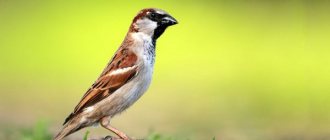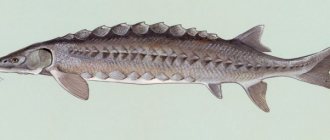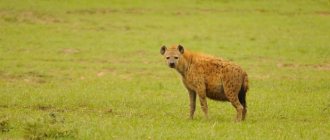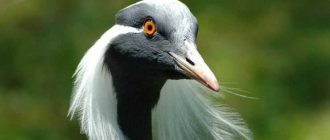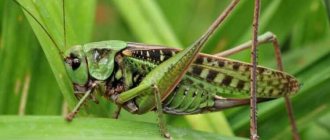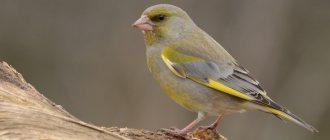- Wild animals
- >>
- Mammals
Well, who doesn’t know the prickly but cute hedgehog, the hero of hundreds of fairy tales and cartoons? A huge number of riddles, songs and nursery rhymes have been written about him. In fairy tales, an ordinary hedgehog is always positive and kind, but what is his character really like? Let's try to figure this out by studying its lifestyle and its characteristic habits.
Origin of the species and description
Photo: Common hedgehog
The common hedgehog is also called the European hedgehog - it is a mammal from the hedgehog family, belonging to the genus of Eurasian (forest) hedgehogs and the order of insectivores. The genus of forest hedgehogs in Latin sounds like “Erinaceus”, which means “thorny barrier”. The hedgehog family has 24 species, grouped into 10 genera. Hedgehogs can be called very ancient animals, because their spiny family has existed since the Paleocene, which means hedgehogs existed many millions of years ago.
Representatives of three hedgehog genera live on the territory of our country:
- Eurasian (forest) hedgehogs, represented by common, Amur, Danube (southern) hedgehogs;
- eared hedgehogs, a species of eared hedgehog of the same genus lives in Russia;
- steppe hedgehogs, of which the Daurian hedgehog has chosen the territory of our state.
The common or Eurasian hedgehog is the most common and is familiar to many, because it is found even on the evening streets of cities. Its dimensions are small, the length of its body varies from 20 to 30 cm, and the hedgehog weighs from 700 to 800 grams. Of course, the main characteristic feature of a hedgehog is its spines, which cover the entire upper part and sides of the animal. Because of them, many people think that the porcupine is a close relative of the hedgehog; this is completely wrong. The hedgehog is much closer and dearer than shrews, moles, gymnurs (rat hedgehogs) and tenrecs. So, not everything that pricks is related to the hedgehog family.
Interesting fact: Few people know that the number of spines covering a mature hedgehog ranges from 5 to 6 thousand, while on a young hedgehog they can be counted about three thousand.
Appearance and features
Photo: Common hedgehog in nature
The dimensions of the hedgehog's body have already been described, but the length of its tail is only 3 cm. The hedgehog's cute muzzle is slightly elongated and ends in a sharp and always wet nose. Neat, rounded, small ears are noticeable on the head. The hedgehog's eyes are also small, round and shiny, like black beads. The hedgehog has 36 small but very sharp teeth, 16 of which are located below, and the rest on the upper jaw. On top, the incisors are spaced apart to allow room for the lower incisors to bite. In general, the entire hedgehog's head is wedge-shaped.
Video: Common hedgehog
The hedgehog's paws are five-fingered, with a sharp claw on each finger. The hind legs are longer than the front ones. The length of hedgehog needles does not exceed three centimeters. The needles are smooth to the touch along their entire length, they are empty from the inside and are filled with air. The color of the needles can be called striped, because they alternate between brownish and light spaces, so the entire needle-like surface of the hedgehog appears pockmarked. In the head area, needles separate the parting. The growth of needles is similar to the growth of hair.
Interesting fact: It is not immediately noticeable, but long, sparse and thin hairs grow between the prickly hedgehog needles.
The hedgehog is not completely covered with needles, its muzzle and abdomen are covered with wool, most often it has a dark grayish-brown color, and the hedgehog’s fur is hard. The hedgehog's fur, unlike its spines, is monochromatic, without inclusions. There are also lighter-colored hedgehogs (for example, those living in Spain). In general, the color of the muzzle, abdomen and limbs of common hedgehogs can range from yellow-white to dark brown.
Interesting fact: Surprisingly, the hedgehog sheds; it does not shed its needles immediately, but gradually, every third hedgehog needle is replaced with a new one. This entire update process can take a year and a half.
Where does the common hedgehog live?
Common hedgehog in Russia
If we talk about hedgehogs in general, they can only be found on two continents: Eurasia and northern Africa. For example, you will not find a hedgehog on the North American continent, although the climate there is almost the same as in Europe. Findings of fossil remains indicate that hedgehogs once lived there, but apparently died out for as yet unknown reasons.
The habitat of the common hedgehog is very extensive; it inhabits both the western and central parts of Europe, and has chosen the spaces of the British Isles, the southern part of Scandinavia, and Kazakhstan. As for our country, here the hedgehog inhabited Western Siberia and the north-west of the European part of the Russian Federation. The prickly one has also established itself well in New Zealand, where it was brought artificially.
The common hedgehog has spread the most:
- in European territories;
- in the northwestern parts of Kazakhstan;
- in the Amur region;
- in western Siberia;
- in the north and northeast of China;
- in Asia Minor.
The hedgehog prefers varied landscapes and terrains. Still, he is most attracted to forest edges, small clearings and copses. The hedgehog inhabits mixed forests, bushes, river floodplains, and grassy plains. The thorny tree avoids swampy lands and dense coniferous forests. Hedgehogs do not shy away from human settlements and are often found within cities, in parks and in private plots. The hedgehog lives strictly on its own plot of land, making its lairs under the roots of trees, in various holes, in dense bushes, and in empty rodent burrows. Prickly is quite capable of digging a shelter for himself, which usually does not exceed a meter in length.
What does an ordinary hedgehog eat?
Photo: Common hedgehog from the Red Book
The common hedgehog can be called an omnivore; its menu is quite varied, but, for the most part, consists of all kinds of insects.
The hedgehog loves to snack:
- caterpillars;
- slugs;
- earwigs;
- earthworms;
- May beetles;
- hairy ground beetles;
- gypsy moths;
- locusts
In addition to insects, the hedgehog will happily feast on lizards, frogs, snails, and toads. The prickly one can plunder a bird's nest located on the ground, eating either eggs or newborn chicks from there. The hedgehog is also not averse to eating mice, voles, but this happens infrequently, because... catching these nimble rodents is not so easy. In addition to the animal diet, the menu also includes plant food, which consists of various berries and fruits. New Zealand hedgehogs, on the contrary, mostly eat plant fruits.
Contrary to popular belief, hedgehogs rarely eat snakes. But, if a fight ensues between a prickly snake and a creeping snake, then the hedgehog, most often, wins it, because the owner of the spines is not at all afraid of the dangerous snake toxin.
Interesting fact: The hedgehog is not afraid of arsenic, opium, senilic acid, or mercuric chloride. All these dangerous toxic substances have little effect on hedgehogs. A dose that can kill a person or other large animal is completely safe for a hedgehog.
If you observe hedgehogs, you can notice their gluttony; hedgehogs eat intensely in order to gain weight before the cold weather arrives and go into hibernation. So, by autumn, hedgehogs gain weight by about half a kilogram and already weigh about 1200 grams. In the spring, after emerging from the anabiotic state, the prickly ones also need food to replenish their reserves of strength, so in one night they can eat an amount of food that is comparable to one-third of the weight of the hedgehog’s entire body.
Interesting fact: It is not recommended to feed hedgehogs any dairy products, because... they are lactose intolerant. People often treat prickly ones with milk, thinking that it will benefit them.
Now you know what to feed an ordinary hedgehog. Let's see how he lives in the wild.
Diet
The hedgehog is an omnivorous animal. It feeds on beetles, earwigs, worms, slugs and other insects. Their diet also includes eggs of ground birds and lizards, small rodents, frogs and toads.
All representatives of hedgehogs are resistant to toxins and poisons, for this reason they eat poisonous snakes and scorpions. Even cadaveric poisons do not bother the strong organism of hedgehogs.
Hedgehogs eat not only animal food, but also plant food: strawberries, acorns, mushrooms, raspberries and other fruits and vegetables.
To prevent the animal from dying from the winter cold, it needs to eat a lot. Well-fed hedgehogs quietly remain in a state of suspended animation from late autumn to early spring.
Features of character and lifestyle
Photo: Common hedgehog
Hedgehogs are active at dusk or at night, going in search of food. The prickly ones do not like to leave their shelter for a long time. During the day they hide in it and rest. Hedgehogs make their nesting sites in bushes, between tree roots, and in empty rodent burrows. Hedgehogs can dig a hole for themselves, with a diameter of 15 to 20 cm, lining it with dry leaves, moss and grass. Hedgehogs take good care of their prickly coats, cleaning the spines with their long middle fingers, and licking their bellies and breasts with their tongues.
Interesting fact: Hedgehog paws are not able to reach all the thorns to clean them, and they often harbor various parasites. In order to get rid of them, the hedgehog uses acid from fruits, riding on fallen apples or other fruits. Because of this, they mistakenly think that the hedgehog pricks apples on thorns and carries them home to eat; hedgehogs do not do this, and, in general, they prefer animal food; on their thorns they can bring only a few dry leaves to the shelter for bedding.
Each individual hedgehog has its own land; the male has a much larger area (from 7 to 40 hectares) than the female (from 6 to 10 hectares). Males zealously protect their allotments, treating any uninvited hedgehog guest with aggression. Common hedgehogs have many talents. In addition to the fact that they constantly star in various cartoons, hedgehogs run well, reaching speeds of up to three meters per second, they can swim perfectly and jump provocatively. Their eyesight is rather weak, but their sense of smell and hearing did not disappoint. With the onset of cold weather and the first frosts, hedgehogs go into hibernation, which lasts from October to April. It’s not for nothing that the prickly ones store fat reserves, because it’s easier to survive the winter this way. It is worth noting that hedgehogs living in warm southern regions do not hibernate.
Interesting fact: In a state of hibernation, the hedgehog’s body temperature drops to 1.8 degrees, and the pulse rate ranges from 20 to 60 beats per minute; the prickly ones inhale only once per minute period.
Having awakened from sleep, the hedgehog is in no hurry to get out of his den; he patiently waits until the temperature outside warms up to fifteen degrees plus. In general, hedgehogs like to live alone, but they settle in the neighborhood, not very far from each other. Only hedgehogs brought to New Zealand adapted to a collective way of life and began to acquire common shelters. In general, the hedgehog is a fairly peaceful animal and can be tamed. Many people keep hedgehogs at home, but you should be prepared in advance for the fact that at night they like to rustle, stomp and puff, because at dusk the prickly, active life of a hedgehog only begins.
How do hedgehogs remove objects from needles?
A hedgehog never puts an apple on needles.
This is always done by a person for the sake of taking a photo or shooting a video. Traveling through forest lands, the hedgehog regularly touches various objects with its back. He also likes to roll on inclined surfaces. Because of this, leaves, thin branches and other objects are often attached to the needles.
Interesting fact : a hedgehog never sticks apples, berries or other food on its needles. This was invented by advertisers and cartoon makers. In fact, the animal immediately eats them without taking them to the lair.
If an animal feels that something is stuck in the thorns, then in most cases it cannot reach the object with its paws. Then the hedgehog begins to roll on the ground and rub against tree trunks in the place where it feels discomfort. The process continues until the needles are clear.
Social structure and reproduction
Photo: Pair of common hedgehogs
When hedgehogs awaken from hibernation, wedding season begins. Animals become sexually mature when they are one year old. Duels often occur between males over females. Rivals strive to bite each other in those places where there are no needles, hedgehogs push and try to prick their enemy harder. During hedgehog battles, snorting and sniffling can be heard. The hedgehog who wins begins to court his partner; he can walk around her for a long time in order to be the center of attention of the hedgehog. There are no strong family unions among hedgehogs; the hedgehog mother has to raise her offspring alone. Hedgehogs are born in a burrow equipped and lined with leaves.
A hedgehog gives birth to offspring once a year. The pregnancy period lasts for one and a half months. Hedgehogs can be born from 3 to 8, but usually there are 4 of them. The babies are born completely helpless and blind, covered with pink skin, no needles or fur are immediately visible. The weight of the hedgehog is about 12 grams.
Interesting fact: Within two hours after birth, the prickly babies begin to grow soft needles, which harden within a couple of days.
By fifteen days of age, hedgehogs have finally formed a prickly coat. During this same period, babies begin to see clearly and try to curl up into a ball. If the mother hedgehog feels any threat to her offspring, then she can move the hedgehogs to another shelter. The female feeds breast milk to the hedgehogs for up to a month. Then the hedgehogs become more independent, closer to two months they noticeably mature, but leave their native hole in the autumn. In natural wild conditions, hedgehogs live from 3 to 5 years, and in captivity their life span is much longer - up to 8 or 10 years.
Do hedgehogs live in captivity?
A hedgehog feels great in captivity if conditions suitable for it are created.
Despite the fact that the natural habitat of hedgehogs is the wild, they can be accustomed to the comfort of home. However, not every individual is ready to exchange their house in the forest for living in an apartment. If a hedgehog brought from the forest behaves aggressively and tries to attack a person, then it is better to release it back into its natural environment. If the family has firmly decided to get an animal, it is better to purchase it in the place where people breed animals. Such individuals from birth get used to the role of a pet, and therefore do not show aggression.
It is better to keep a hedgehog in a spacious metal cage with special filling. But it is advisable to regularly let him go for a walk around the apartment. In the wild, the animal runs long distances every day, and domestic animals should not be deprived of similar exercise.
The hedgehog should be given vegetables and fruits as food. They should also be regularly pampered with meat and insects. The more varied the animal’s diet, the better it will feel. Fortunately, in any city there are a large number of pet stores that sell a wide variety of food.
Natural enemies of common hedgehogs
Photo: Common hedgehog in nature
The hedgehog itself is peaceful, but it has plenty of enemies in the wild. Of course, inexperienced young animals are most vulnerable.
Among the hedgehogs' enemies we can list:
- ferrets;
- foxes;
- badgers;
- feathered predators (owls, eagle owls, eagles);
- martens;
- snake.
The hedgehog is not so simple, he has his own methods of protection, it is not for nothing that he is covered with thorny armor, which often saves his life. Seeing an ill-wisher, the hedgehog jumps on him, trying to inject him, and then quickly transforms into a prickly ball. Predators, having pricked the paws and muzzle, often retreat, losing interest in the hedgehog.
The hedgehog also has sophisticated enemies who know clever maneuvers to outwit the prickly one. An eagle owl always catches a hedgehog unexpectedly; it sneaks up on it without making any sounds, which confuses the animal. Cunning foxes try to drive the hedgehog into the water, where it has no opportunity to curl up into a ball, which makes it defenseless against the enemy.
When a snake attacks a hedgehog, most often the snake suffers, and the hedgehog wins. The prickly one is not afraid of poisonous bites, because toxins have practically no effect on it. Having grabbed the reptile, the hedgehog curls up into a ball, slowly wrapping the snake around itself, causing the crawling creature to die.
One of the enemies of hedgehogs can also be considered a person who, through his vigorous activity, harms many animals. Although hedgehogs are able to live in cities, many animals die under the wheels of cars when crossing the highway. Of course, no one specifically hunts the hedgehog, although in ancient times the Romans used hedgehog skins to comb sheep. Now the hedgehog is suffering due to the fact that people are displacing it from its permanent places of residence, invading natural biotopes and worsening the ecological situation as a whole.
Interesting fact: At the beginning of the last century, a large number of hedgehogs died due to the fast food chain McDonalds. The size of the ice cream cups was narrow, and the prickly ones feasted on the remains of the sweet near the bins, sticking their heads into the glasses and becoming trapped. After demonstrations and protests by animal rights activists, the restaurant had to expand the diameter of the cups.
Population and species status
Photo: Common hedgehog in Russia
The distribution area of the common hedgehog is quite extensive, hedgehogs inhabit various landscapes, even being found in large cities, but, nevertheless, they are considered forest dwellers, loving the edges and woodlands. Regarding the size of the hedgehog population, the situation is not favorable everywhere; in many regions, a decrease in the number of prickly hedgehogs has been noticed; in some places where hedgehogs were often found before, they have become very rare and a curiosity, which is very worrying for environmental organizations.
The main reasons for the decline in the number of hedgehogs are a number of anthropogenic factors: deforestation, construction of new highways, urban sprawl, human intervention in natural biotopes and their isolation and fragmentation, destruction of natural hedgehog shelters, lack of food as a result of landscape cultivation and annual spring fires, pollution the natural environment as a whole.
All of the above negative trends affect the size of the hedgehog population, which is steadily and gradually declining. On the territory of our country, in some regions, the common hedgehog is included in the regional Red Data Books as a rare species with an ever-decreasing number. So, the prickly forest dweller needs certain protective measures.
Video
And in conclusion, an interesting documentary on the topic of our article - “The Hedgehog - the Garden Warrior.”
Author: Pavel Chaika, editor-in-chief of Poznavaika magazine
When writing the article, I tried to make it as interesting, useful and high-quality as possible. I would be grateful for any feedback and constructive criticism in the form of comments on the article. You can also write your wish/question/suggestion to my email [email protected] or Facebook, with respect, the author.
Author page
